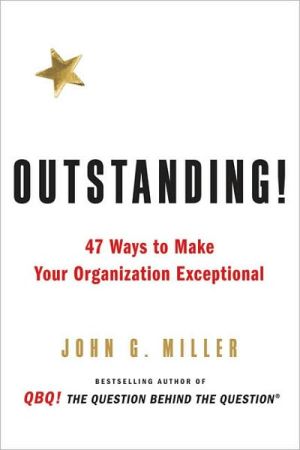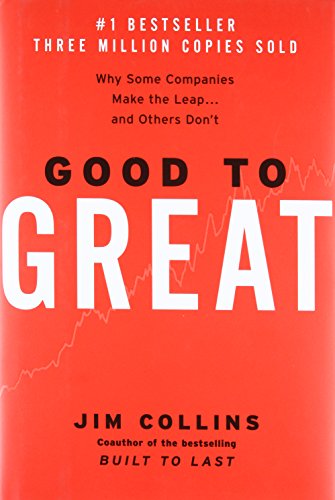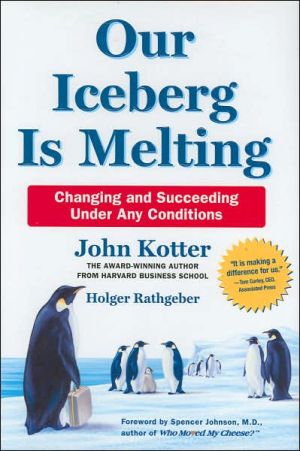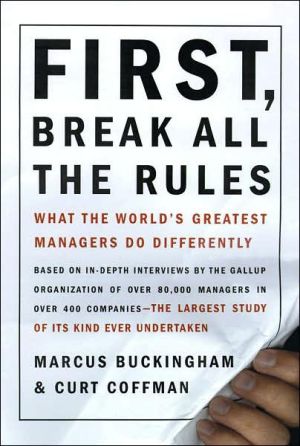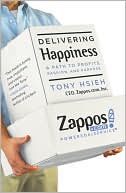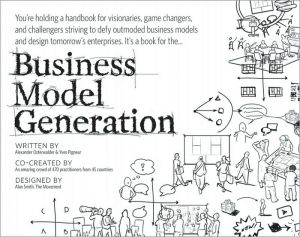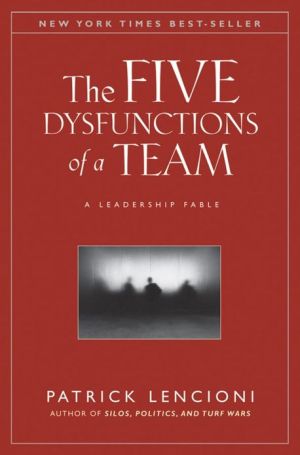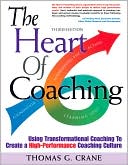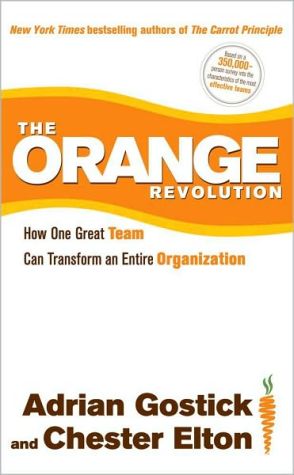Outstanding: 47 Ways to Make Your Organization Exceptional
"Outstanding! hits the nail on the head in every way: Practical content, terrific stories, and an easy read. Miller has provided a road map for organizations to become exceptional—just follow the path laid out. Definitely a must read!"\ —Dave Ramsey, author of Total Money Makeover and host of The Dave Ramsey Show\ Every day outstanding organizations do things and promote values that ensure they will retain customers, grow revenues, increase market share, and build their reputations. People...
Search in google:
The bestselling author of QBQ! shows how anyone can use the unlimited potential of accountability to create an outstanding organization. How to be outstanding:Deliver what you promise.Reward the work ethic, not the workaholic.Accept failure as a part of doing business-and learn from it.Choose character over credentials.Embrace humility-it is not humbling; it is empowering. Do people fire companies? You bet they do. But anyone can fireproof their organization with the timely and timeless ideas in Outstanding. Every day outstanding organizations do things that ensure they will retain customers, grow revenues, increase market share, and build their reputations. These successful organi-zations comprise people who hold values and take actions- individually and collectively-that are simple but not always easy or obvious. Informed by Miller's own commitment to the power of per-sonal accountability and enlivened by compelling true stories, Outstanding identifies...
• CHAPTER ONE•\ Be Fast\ While ordering lunch at a fast-food place (on this particular day, it was a Wendy’s), I noticed a digital clock on the wall where they were handling drive- through customers. In big red numbers, it would start at zero, tick up in time by seconds, and then suddenly reset back to zero and start counting up again. I asked the woman taking my money what the clock was for, and she said, “That shows us how quickly we’re handling the customers outside.” Interesting, I thought. So I continued, “And what do you do with the information? Do you look at your average serve time daily?” And right then, her supervisor, listening to our conversation, jumped in enthusiastically and answered my question: “Oh, no, we check our score every three hours. We need to be fast, you know!” And I thought, Don’t we all.\ How fast is your organization?\ Outstanding organizations have a tremendous sense of urgency. People get things done—quickly. There is little waiting around for approval, there are few meetings, and even fewer “committee decisions.” They resist creating burdensome policies, and where policies do become roadblocks, managers carry a sharp pair of scissors, constantly clearing the way for their people by cutting the red tape.\ An executive at H. B. Fuller, an esteemed organization founded in 1887 in St. Paul, Minnesota, once shared with me this colorful metaphor: “John, it’s a bad day for us when a snake slithers into the lobby and we all encircle the reptile to assess the situation, discuss where it came from, who let it in, and what species it is. It’s a good day when someone just grabs a shovel and cuts its head off.” Apologies to snake lovers—of which I’m one—but what he was saying is true. When the bullets are flying, don’t call a meeting. Don’t stand around and contemplate. Do something!\ The fact is, some decisions simply do not need to be a big deal. If there’s a snake in the lobby, take care of it. If you’re looking for a vendor to help on a project, find some candidates, check them out, and pick one. Way too often the many hoops organizations make their people jump through, plus the number of people invited into the decision-making process, cause decisions that should realistically take a day or a week to drag on for months, sometimes years.\ What ineffective organizations don’t understand is how much money is pouring out the back door due to these sorts of things. Not only does it cost the time and energy—and compensation—of everyone involved, but every minute spent on one thing is a minute not available to work on something else. I have honestly seen “buying committees” spend, say, $250,000 in collective salary cost to make a $50,000 decision. I bet you’ve seen this happen, too. It’s math that just doesn’t add up. One manager at a Fortune 500 firm shared candidly, “I do not work for an outstanding organization. We are a good organization with a good reputation, but decisions take too long. Our market moves at lightning speed, and it seems we’re always a step or two behind while some unknown, unnamed committee meets to plan their next meeting. We’ve lost multimillion-dollar contracts while waiting and waiting and waiting for decisions to be reached.”\ To be fast does not mean we should be foolish and be in such a rush that we make mistakes. Taking the time to make good decisions is critical—but outstanding organizations make good decisions faster. And they do it by creating a culture that sends the message: Let’s get it done... yesterday!\ In a way, we’re all like the staff at Wendy’s, with a clock on the wall, ticking away precious time. Let’s make the best use of every second.\ Be fast\ • CHAPTER TWO •\ When I left the training firm I sold for after a decade of calling on senior managers, I really wanted to author a book titled The Arrogance of Management. But, alas, I didn’t think executives would buy it.\ Ben Franklin said this about pride: “Even if I could conceive that I had completely overcome it, I would probably be proud of my humility.” That tongue-in-cheek humor really states a truth: After making the big sale, delivering the project on time, launching a winning product, or landing a promotion, it can be seriously hard to show humility. Yet that’s what we find in outstanding organizations.\ Sheryll, a project coordinator in information services with a major healthcare organization, told me, “Our CIO sent an amazing message to all the employees in our department. It makes me want to give him a big hug! But since it’s probably not appropriate to do that, I am just going to stop by his office to thank him for being a marvelous role model, and let him know how much I appreciate his accountable actions!”\ She went on to tell me about an incident that seemed minor initially, but snowballed into a problem for this executive. To save money, he had decided to change cake vendors. Yes, you read that right: cake. His technology team has a long-standing and highly valued “Cake Day” tradition in which they recognize service anniversaries, birthdays, and other such milestones by getting cake for everyone to share, and the CIO had made the decision to switch to a cheaper cake supplier. Naturally, these celebrations are important to the hundreds of people in the department, but the CIO didn’t understand how important they were—and that’s fair. Often in life one person doesn’t know what something means to another. However, on top of making the change to a possibly less tasty product, his email to everyone announcing the switch also facetiously described the change as a “drastic cost-cutting measure.” Though there was absolutely no bad intent on his part, the proverbial molehill grew into the mountain, and in came feedback indicating that he now had a minicrisis on his hands.\ So he handled it with grace and aplomb, taking a rare action by those “at the top”: He apologized. In a broadcast email, he wrote contritely that he shouldn’t have made light of this change and that he owed them a sincere apology. He accepted responsibility for the mess and even claimed poor judgment. He went on to confess that he doesn’t always choose the right words, but assured everyone that his colleagues mean the world to him and are his highest priority.\ Rarely have I come across such a powerful example of being humble. I believe that humility is the cornerstone of leadership. Others do, too. Russ Gasdia, vice president of sales and marketing for Purdue Pharma, sums it up well. When asked to list three characteristics of an “effective leader,” he said, “Humility, humility, and humility. They know they make mistakes, accept feedback from others in order to learn, admit they don’t always know what’s right, and recognize it’s not ‘all about them.’ When they succeed, they are humble. When they fail, they are humble. And lastly, they never think they are more important than the customer!”\ Humility is a key trait of outstanding organizations— and of individuals. Humility helps people be more likable and approachable, work better with others, and give better service to customers. It enables departments and teams to collaborate with other departments and teams. Perhaps most important, it allows people to communicate more freely, creating a culture of authenticity and accountability that every outstanding organization requires. Beyond all this, it might even win us a hug or two—and maybe there’s nothing wrong with that!
